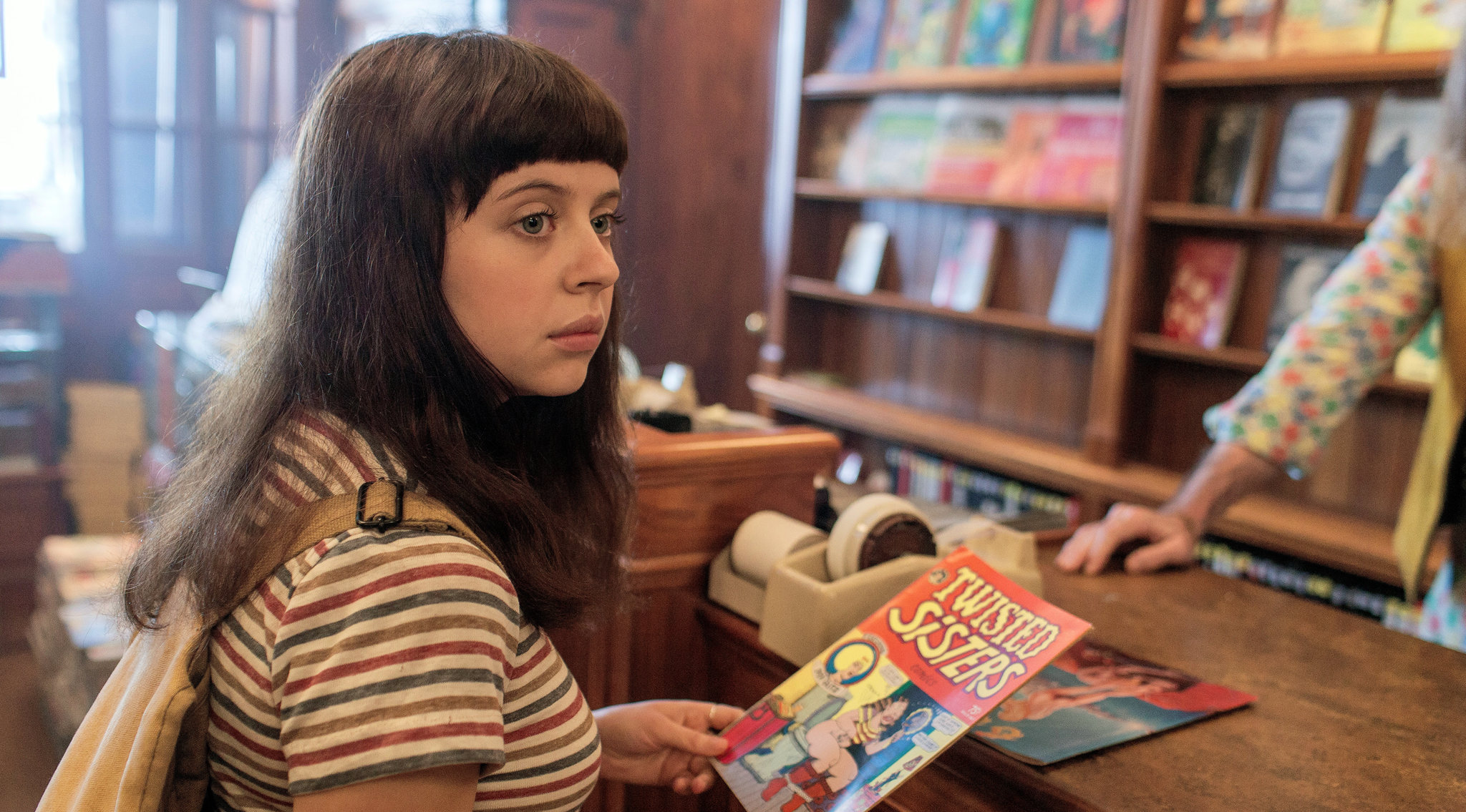It needs to be made clear that Phoebe Gloeckner’s The Diary of a Teenage Girl is not actually a graphic novel. It’s a prose novel that happens to have some illustrations and some pages of comics. That won’t stop people from referring to it as a “graphic novel” though.
And for my purposes, it’s close enough. It feels so closely tied to comics that it would’ve felt strange to not include it.

The Diary of a Teenage Girl follows about a year in the life of the 15-year-old Minnie as she tries to make sense of her life in mid-70s San Francisco. Her mother is busy partying and Minnie, despite being sent to private schools, is far more interested in sex and art than she is in academics. She begins having sex with her mother’s thirtysomething sometimes boyfriend, Monroe. Yes, that’s all as uncomfortable as it sounds.
Gloeckner never writes Minnie as a victim — she always comes across as very clear-eyed and honest about her situation, which almost makes what is happening to her worse. If Minnie felt more innocent, less self-aware, it would feel so much clearer that Monroe is taking advantage of her (which he is!) but Minnie always believes she’s in control.
All the adults in Minnie’s life fail her in one way or another. Her mother is loving but not up to adult responsibilities (and once she finds about Monroe and Minnie, her solution is for them to get married). Even her former stepfather, Pascal, who genuinely seems to care about her, turns out to be a creep in his own way. Minnie is left alone to figure all of this out.
It’s not the most pleasant read, if you can imagine, but Gloeckner offers a lot of wit and humor. It’s not all bleak. Minnie is smart and funny and it’s fun to watch her find a way to communicate with the world as a comics artist.
The illustrations and comics passages also offer insight into Minnie’s situation. I feel like the comic parts are things Minnie didn’t want to write diary entries about. Since the novel is almost entirely from Minnie’s perspective, it’s refreshing the comics allow the reader to step away and see things from the outside. Gloeckner is clearly influenced by the underground comics as well as her experience as a medical illustrator so her artwork is both distorted and precise. It works well for the story she’s telling here.
Given the subject matter, any movie made out of the novel has to be careful to find the right tone. Luckily, The Diary of a Teenage Girl (2015, directed by Marielle Heller) mostly succeeds there. Heller, who also wrote the adaptation, balances Minnie’s (Bel Powley) independence and newfound sexuality against the discomfort it brings to everyone. Heller allows Minnie’s experiences to be liberating for her while not making excuses for the predatory relationship she has with Monroe (Alexander Skarsgård).
Powley is a wonder here. Her expressive face and big eyes are captivating and she can easily shift from looking like she’s 15 to older, which is much the way the world sees her (Powley was in her early 20s when she made the movie). Skarsgård strikes the right balance of a man who is essentially a loser but whose personification of adulthood would be appealing to a teenager who is eager for new experiences. Kristen Wiig as Minnie’s mother is given less to do, other than be absent and party.
Heller makes some changes from the novel. Minnie’s school troubles are only briefly touched upon and while Pascal (Christopher Meloni) has trouble connecting with Minnie and her sister, Gretel (Abigail Waite) as they are getting older, that’s his only failure. Most of Minnie’s outside relationships with boys are minimized, too, but that feels mostly to streamline the plot. And unlike the novel where Monroe was just one of her mother’s many boyfriends, here he’s really the only one we see. That does add an even more distressing element the movie since Monroe has essentially taken on a stepfather role.
In part due to Powley’s open and vulnerable performance, there is more joy in the movie than there is in the novel and some of the darker elements are downplayed. It’s still a movie about a teenage girl having sex with an older man, of course, but we are limited by Minnie’s wide-eyed perspective on it all.
The movie also has Minnie imagining Aline Kominsky acting as a sounding board for her. I thought this was great because even though Minnie didn’t know Aline personally, it was good for her to have an adult to look up to.
Heller’s choice to have Minnie record her diary on tape does get around the voiceover narration aspect but it still amounts to the same thing. Minnie, as an aspiring artist, seems like someone who’d be much more comfortable with paper than talking into a tape player.
The novel ends with Minnie realizing Monroe has no power over her and that she’s better than he is. It’s mostly inconclusive, though, because we don’t really know what Minnie’s future will hold for her. Her diary stops there.
The movie, however, ends with Minnie dancing around her bedroom after having found a newly close relationship with her mother. Minnie realizes she doesn’t need a man to be happy and that she can be happy with who she is. It’s not quite a pat Hollywood ending, but it does feel oddly optimistic given that Minnie will likely be dealing with the significance of these circumstances for years to come. But Powley and the movie sells it fairly well. Mostly, I just want the best for Minnie because she deserves it.

